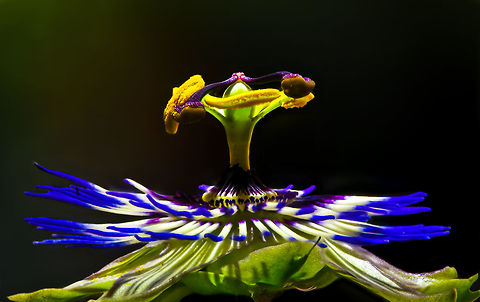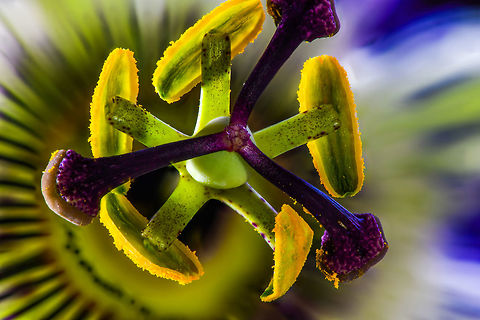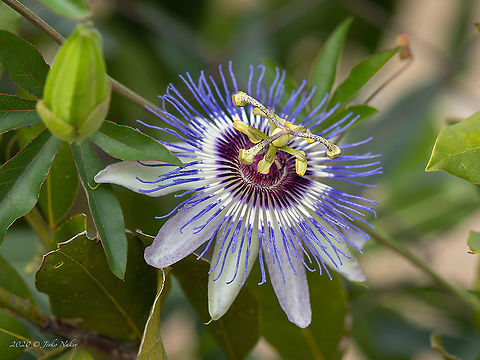
Appearance
A woody vine capable of growing to 15–20 m high where supporting trees are available. The leaves are alternate, palmately five-lobed like a spread hand (sometimes three or seven lobes), 10–18 cm long and wide. The base of each leaf has a flagellate-twining tendril 5–10 cm long, which twines around supporting vegetation to hold the plant up.The flower is complex, about 10 cm in diameter, with the five sepals and petals similar in appearance, whitish in colour, surmounted by a corona of blue or violet filaments, then five greenish-yellow stamens and three purple stigmas. The fruit is an oval orange-yellow berry 6 cm long by 4 cm in diameter, containing numerous seeds; it is eaten, and the seeds spread by mammals and birds. In tropical climates, it will flower all year round.

Uses
Passiflora caerulea is cultivated worldwide (it is also a pest plant in certain countries). Even though the fruit is edible, it is rather insipid when eaten raw. It can substitute for blackberries. More palatable is the fruit of the Passiflora edulis, which is sweet and acidic. A tea can be made of the flower and is said to alleviate stress and anxiety. However, tetraphyllin B and epi-tetraphyllin B, cyanogenic glycosides (which liberate hydrogen cyanide when activated by enzymes), have been found in the leaves. It is possible to boil away most of the cyanide.[citation needed].In South America, it is used to make juice and delicious desserts such as the passion fruit mousse.

Cultural
The flower of the passion fruit is considered as the national flower of Paraguay. It is said to be the Jesus Flower. Each part of the flower represents a different part of the Passion of Christ. See Passiflora "Etymology and names" section for more information about the symbolism.References:
Some text fragments are auto parsed from Wikipedia.